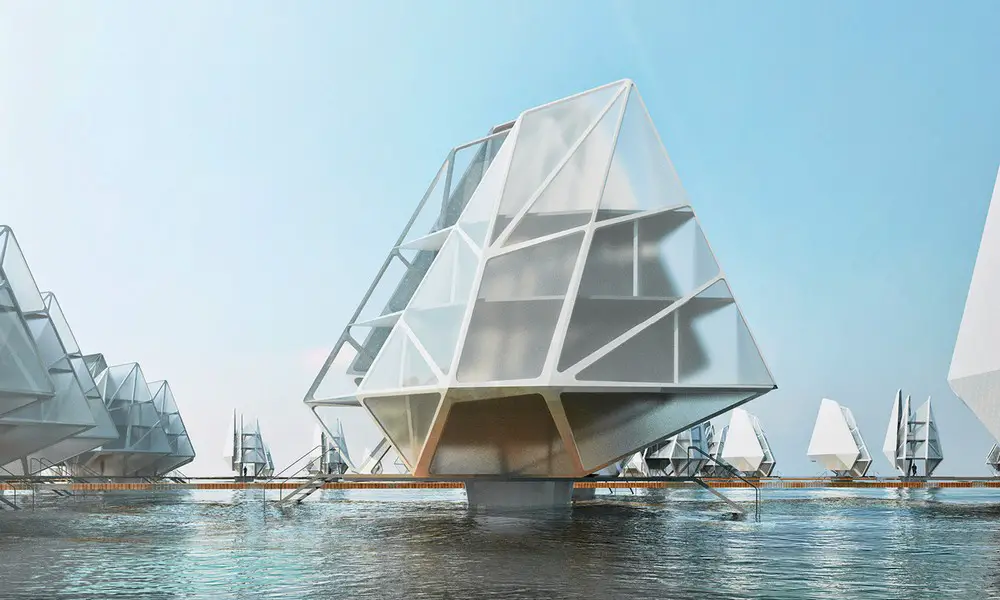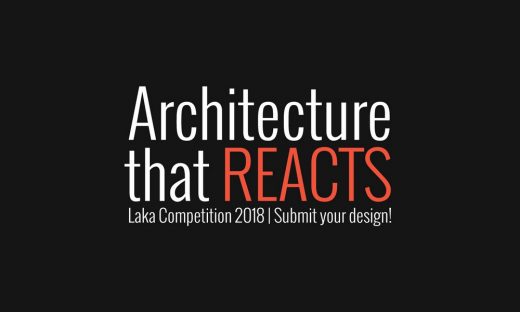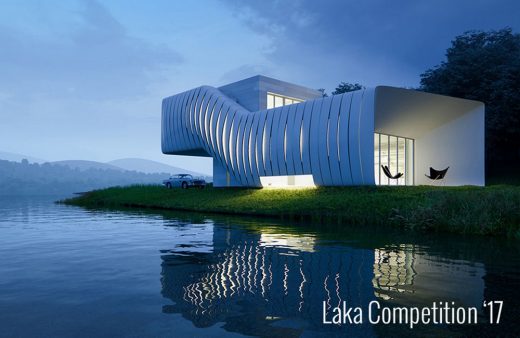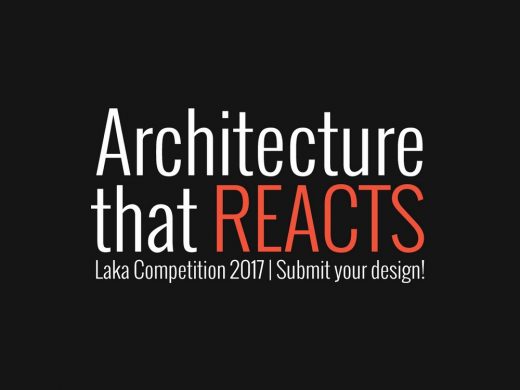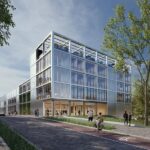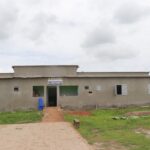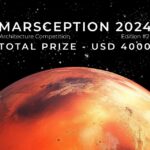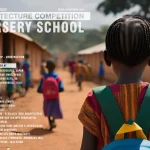Laka Competition 2018, Architecture Contest News, Jury, Prize, Deadline
Laka Competition 2018
International Architectural Contest – Architecture that Reacts
7 Jun 2019
Laka Competition 2020: Architecture that Reacts
6 Apr 2018
Laka Competition 2018 News
Laka Competition 2018: Architecture that Reacts
Laka Competition 2018: “Architecture that Reacts” Competition Brief
1. About Laka
Laka is a non-profit organization and an international network focused on positive social impact through responsible design and architecture. The beliefs in the importance of interdisciplinary collaboration and in the potential of creative ideas are the core values of the programs and projects that Laka implements. https://lakareacts.com
2. About Laka’s Programs and Projects
Laka develops projects and programs that underline the crucial role of architecture and technology in the process of positive social change and development.
● Laka Competition is an international annual competition that seeks innovative ideas in architecture, design, and technology that are capable of reacting and dynamically adjusting to the conditions of the environment (either natural, social, or built).
● ‘Laka Perspectives’ is an award-winning annual publication (first published in January 2018) featuring interviews with the leaders in architecture, urban planning, computational design, digital fabrication, smart materials, mobility, biomimicry, and more.
● Laka Accelerator is an international program that aims to offer opportunities for investigation of the best designs by providing professional consulting and international press coverage.
“Currents for Currents” by Deo Alrashid Trevecedo Alam, Pierre Michael Monjardin, Andrew Galano:
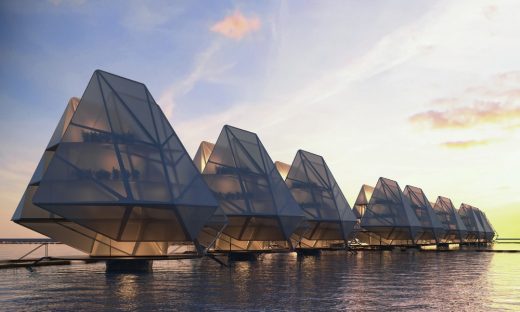
3. About Laka Competition 2018 “Architecture that Reacts”
Laka invites designers from around the world to submit their ideas of ‘architecture that reacts.’ The main focus of the competition is on the solutions that develop through a process of changes and adjustments. The subject of the competition is architectural, design, or technological solutions that are capable of dynamic interaction with their surroundings. https://lakareacts.com/competition-2018/
“Currents for Currents” by Deo Alrashid Trevecedo Alam, Pierre Michael Monjardin, Andrew Galano:
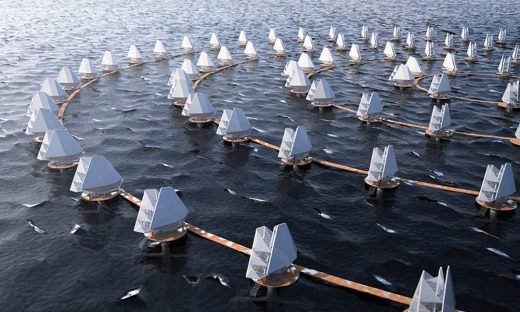
4. International Jury
Alberto T. Estévez (Architect, Educator, Art Historian, Ph.D. of Sciences, Ph.D. of Arts, Founder of ESARQ/UIC).
Architect (UPC, 1983), Architecture Ph.D. of Sciences (UPC, 1990), Art Historian (UB, 1994), Art History Ph.D. of Arts (UB, 2008), with the office of architecture and design in Barcelona. Founder of two research lines with two master’s degrees and Ph.D. programs: ‘Genetic Architectures/Biodigital Architecture’ (UIC, 2000–present) and ‘History, Architecture, and Design’ (UIC, 1998–present). Author of more than one hundred publications and participant in a large number of exhibitions, congresses, and conferences around the world. Founder of the world’s first Genetic Architectures Laboratory (UIC, Barcelona, 2000), where geneticists worked with architectural objectives in a real application of genetics to architecture. http://albertoestevez.es/
Ana Rewakowicz (Artist, Inventor, Designer).
A graduate of Ontario College of Art and Design in Toronto with an MFA from Concordia University in Montréal, Canada. She investigates relationships among portable architecture, the body, and the environment. Her professional activities cross into the disciplines of art, design, architecture, and performance. A participant of numerous exhibitions around the world (including ‘Air Conditions,’ Stiftelsen 3,14, Norway; ‘Conversation Bubble,’ Stiftelsen 3,14, Bergen, Norway; ‘ISEA 2014,’ United Arab Emirates; ‘Manif d’art 4,’ La Biennale de Québec, Canada) and the creator of such works as ‘Ice Fracture’ in Delaney Park, Anchorage, Alaska, USA; ‘Air Cleanser,’ Rosenlew Factory, Pori, Finland; and ‘Green Line Project,’ Lauttasaari-Helsinki, Finland. http://rewana.com
Dagmar Reinhardt (Ph.D., Architect, Educator, Principal of reinhardtjung).
The Program Director of the Bachelor of Architecture and Environments and Studio Leader of the Master of Digital Architecture Research at the Faculty of Architecture, Design, and Planning at the University of Sydney. In 2009, she completed her Ph.D. research, which investigated design techniques in fashion and focused on latent spatial organizations. She is the Co-Chair of the Rob|Arch2016 Robots in Architecture, Art, and Design (hosted by The University of Sydney). Her office, reinhardtjung, covers architecture and design in theory and practice, in buildings, installations and curatorial series, publications, academic research, and architectural projects. http://www.reinhardtjung.de | http://www.robarch2016.org
Hani Rashid (Architect, Designer, Educator, Co-founder of Asymptote, Head of Studio_Hani Rashid).
Co-founder and Design Partner at Asymptote Architecture, a leading international architecture practice. Hani held visiting professorships at universities such as the Royal Academy of Fine Arts in Copenhagen, Harvard University Graduate School of Design, the Berlage Institute in Amsterdam, and the Swiss Federal Institute of Technology (ETH) in Zurich. A laureate of numerous awards such as the Frederick Kiesler Prize for Architecture and the Arts (2004); the AIA NY Chapter Design Award, Interior Architecture (2007); and the Middle East Architect Awards, Hospitality Project of the Year, the Yas Hotel (2011). Currently, Hani leads the Deep_Futures research department and is the International Dean of the Institute of Architecture at the University of Applied Arts in Vienna. https://www.asymptote.net
“Sporos” by Mario Boncristiano:
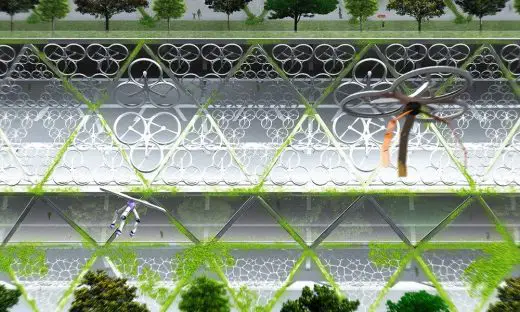
Paul Clemens Bart (Architect, Designer, Co-founder of BART//BRATKE).
A German architect and designer with broad experience in multifaceted disciplines, collected at Zaha Hadid Architects, LAVA Sydney and Berlin, and the German Institute of Science and Technology, Singapore. Paul is a co-founder of the research design collaborative BART//BRATKE. He holds a diploma in architecture from the Technical University of Munich and a M.Arch. from the Architectural Association’s Design Research Lab in London. Paul studied at Nanyang Technological University, Singapore, and École Spéciale d’Architecture Paris. His work is committed to emerging technologies, digital methodologies, and their application across scales. A laureate of the second prize in the Laka Competition 2017. http://bartbratke.com/
Peter Kuczia (IARP&BAK Architect, Ph.D., Educator, Creator of CO2 Saver House).
Educator and expert in ecological constructions with more than twenty years of experience. In 2008, he defended his Ph.D. dissertation on solar architecture in Germany. Author of ‘Educating Buildings – Learning Sustainability through Displayed Design.’ He has been awarded international prizes, such as the first prize of the Polish Green Building Council for ZEROENERGY Research and the Educational Complex Wroclaw University of Technology, a national nomination to the MIES VAN DER ROHE AWARD for European Architecture, and many others. His work, which covers a wide range of building types, has been exhibited and published around the world. http://www.kuczia.com
Marvin Bratke (Dipl.-Ing., Architect, Co-founder of BART//BRATKE, Visiting Professor Muthesius Academy of Arts).
A German architect and designer with a diploma in architecture (with a special focus on mobility) received at Technical University of Munich. Marvin’s research is focused on emergent technologies in architecture and industrial design. In 2014, he co-founded the research practice BART//BRATKE. Marvin holds a visiting professorship at Muthesius Academy of Arts and is engaged as a director at Graft Architects. Previously, he has worked as Design Architect at LAVA, Senior Designer at MLAUS, and Urban Researcher/Transportation Designer at GIST (German Institute for Science and Technology) and has contributed advanced geometry solutions for KERE Architecture. A laureate of the second prize in the Laka Competition 2017. http://bartbratke.com
“Towards a Lively Architecture” by David Heaton:
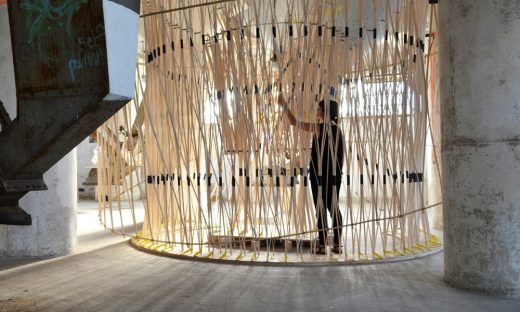
5. Judging Criteria
The participants are free to decide the project’s location, scale, size, and program. Listed below are some highlighted issues that the jury will pay attention to:
● a properly indicated architectural, social, or environmental issue to solve ● an accurate analysis of the selected issue
● a properly chosen solution that “reacts” to the indicated issue Listed below are some issues that explain the concept of “Architecture that Reacts”:
● an ability to respond to social, economic, or environmental changes ● a level of social and environmental engagement of the design ● a relationship to a specific social, natural, and built context ● a level of flexibility and adaptability of the design ● an innovative use of technology and sustainable systems ● a level of self-sufficiency of the design
Image by Michael Arellanes II:
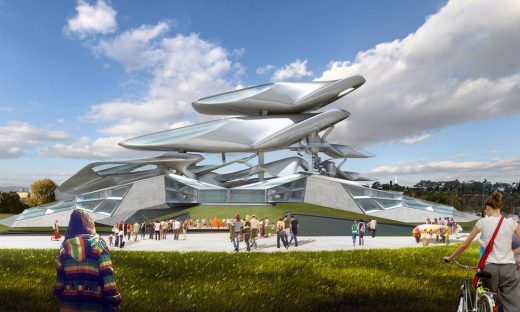
6. Awards
Three main prizes and approximately ten honorable mentions will be selected. 1) Laureates of the main prizes will be
● awarded 1000 USD per team and
● invited to join the ‘Laka Perspectives’ book vol. 2. 2) Laureates of the main prizes and honorable mentions will be
● provided with feedback on their designs by selected experts from the Laka Accelerator,
● presented on Laka’s websites and promoted among Laka’s network of partners, and
● included in future Laka publications related to the competition.
More information about the awards:
● Laureates of the main prizes will be invited to join the ‘Laka Perspectives’ book vol. 2 among such leaders as Toyo Ito (Laureate of the Pritzker Prize 2013 and UIA Gold Medal in 2017, Founder of Toyo Ito & Associates), Carlo Ratti (Director of the Senseable City Lab at MIT, Founder of Carlo Ratti Associati), Peter Kuczia (Founder of Kuczia Architects), Elizabeth Monoian and Robert Ferry (Founding Partners of Land Art Generator Initiative), and Kamil Łabanowicz (Team Leader at AUDI AG).
● Laka will be announcing the next participants in the ‘Laka Perspectives’ book vol. 2 via social media channels. Learn more about the previous volume at https://lakaperspectives.com.
● Feedback on awarded designs will be provided by the selected experts from the Laka Accelerator during the first quarter of 2019.
“noMad” by Paul Bart, Marvin Bratke, Dmytro Aranchii, Flavia Ghirotto Santos, Yuqiu Jiang:
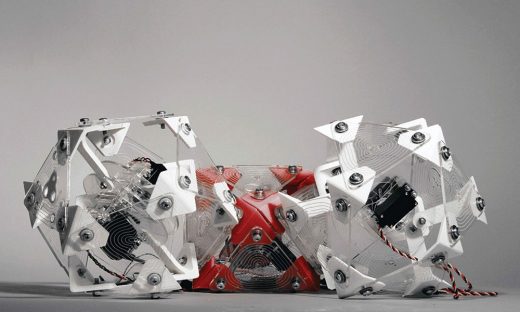
7. Join the Competition We invite architects, students, engineers, biologists, sociologists, designers, thinkers, companies, organizations, and everyone interested in the mission of the competition to submit their ideas. No professional qualifications are necessary.
Schedule:
● Registration opens in April 2018
● Early Registration (April 1st–June 1st): 50 USD
● Regular Registration (June 2nd–October 1st): 75 USD
● Late Registration (October 2nd–November 1st): 100 USD
● Project submission deadline: November 2nd, 2018
● Jury deliberation: November, 2018
● Winners’ announcement: December 1st, 2018 UTC time zone for all dates.
● Participants may submit multiple projects, but each entry must be registered separately.
● There is no limit as to the number of participants per team. ● Individual entries are allowed.
● Interdisciplinary teams are encouraged to join.
● After your registration has been approved, we will send you a unique number for your team.
● If you haven’t received a confirmation within two business days, please contact us at hello@lakareacts.com or our Facebook profile.
● The registration number will be necessary to submit your proposal.
● Registration fees support the development of the Laka Competition.
● If your financial situation doesn’t allow you to participate in the competition, please contact us.
● Laka reserves the right to reduce the registration fee for selected participants in difficult financial situations after a positive evaluation of their individual requests.
“Currents for Currents” by Deo Alrashid Trevecedo Alam, Pierre Michael Monjardin, Andrew Galano:
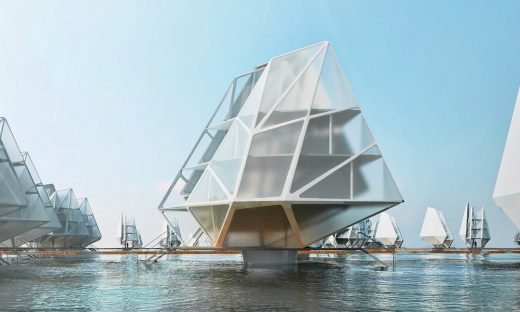
8. Submission Requirements
● Participants must submit their proposals no later than November 2, 2018 (23:59 UTC), to competition@lakareacts.com with “Laka Competition 2018 Entry” in the subject.
● This is a digital competition, and the boards must be prepared in digital format.
● Hard copies will not be accepted.
The project submission must contain the three following files: 1. One board 24” (h) X 48” (w):
● Named according to the registration number (e.g., “0227.jpg”).
● Saved as a JPG file in RGB mode, in horizontal format with 150 dpi.
● The size of the JPG file should be less than 10 MB.
● In the upper right corner, the registration number must be included.
● This is an anonymous competition.
● The registration number must be the only form of identification. 2. A DOC file with the project statement (up to 500 words):
● Named according to the registration number (e.g., “0227-statement.doc”). 3. A DOC file with the participants’ personal information:
● Named according to the registration number (e.g., “0227-team.doc”). ● It should include name, profession, address, and email.
● In the case of a team, a team representative must be indicated.
● All three files must be placed in a folder named according to your registration number and archived to a ZIP file (e.g., “0227.zip”).
● DOC files must include plain text only (any other materials, such as images, tables, and charts, are not allowed).
● The ZIP file must not be larger than 10 MB and must be sent to competition@lakareacts.com with “Laka Competition 2018 Entry” in the subject no later than on November 2, 2018 (UTC).
● We will send you a confirmation of our receipt of the materials within 48 hours.
9. Rules and Regulations
● Participants can submit their inquiries to hello@lakareacts.com.
● All projects must be submitted in English. ● This is an anonymous competition.
● The registration number is the only form of identification. ● The registration fee is non-refundable.
● Contacting the jury is prohibited.
● Entrants will be disqualified if any of the rules and regulations are not followed.
● Laka reserves the right to modify the competition schedule.
● Laureates of main prizes will be asked to provide the written material (an interview, general essay, description of the submission, or something different) within two weeks of their request from Laka. The final form of the written material will be indicated by Laka. The written material should be prepared professionally in American English.
● The organizer pays 10% tax on financial awards in the country of the business activity.
● The organizer reserves the right to increase the value of the financial award. ● All participants must accept the rules and regulations.
“noMad” by Paul Bart, Marvin Bratke, Dmytro Aranchii, Flavia Ghirotto Santos, Yuqiu Jiang:
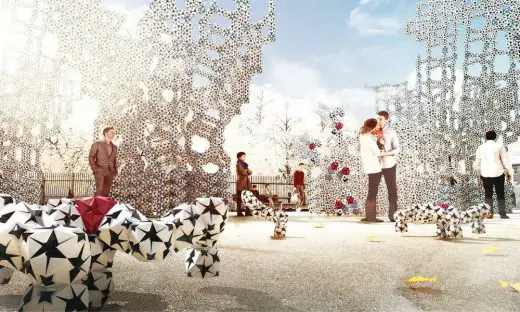
10. Contact us
● If you have questions about the competition, please contact us: hello@lakareacts.com.
● If you haven’t received our reply, your inquiry may not have reached us for technical reasons. In this case, please contact us again via our social media.
● We answer inquiries within two business days.
Laka’s websites: hello@lakareacts.com Laka Competition 2018: https://lakareacts.com/competition-2018/ ‘Laka Perspectives’ book: http://lakaperspectives.com
Follow on social media:
https://facebook.com/Laka.reacts
twitter.com/lakareacts
https://www.instagram.com/laka.reacts
https://www.linkedin.com/company/laka-architektura
16 Oct 2017
Laka Competition 2017 Registration
The registration of Laka Competition 2017 ends within 3 weeks
25 Sep 2017
Laka Competition 2017: Architecture that Reacts
Laka Competition 2017: Architecture that Reacts
Designers from around the world are invited to submit their ideas of architecture that reacts. That means architecture which is able to respond and adjust dynamically to the current needs and circumstances.
These circumstances are often unpredictable, but their consequences can be crucial. The architecture that reacts is the architecture that lives as a living organism, since it responds to the external stimuli and develops because of it.
International Jury
Alexander Rieck (Architect, Researcher, Co-Founder of LAVA)
Carlo Ratti (Architect, Founder of Carlo Ratti Associati, Director of the Senseable City Lab)
Melanie Fessel (Architect, Urban designer, Director at Terreform ONE & ONE Odyssey)
Peter Kuczia (IARP, BAK Architect, author of CO2 Saver House)
Thom Faulders (Architect, Professor of Architecture at California College of the Arts)
Vincent Callebaut (Archibiotect, Designer, Founder of Vincent Callebaut Architectures)
Awards
5000 USD will be distributed among winners:
1st PRIZE: 2500 USD
2nd PRIZE: 1500 USD
3rd PRIZE: 1000 USD
In addition: 10 honorable mentions will be selected.
Schedule
(egistration opens in April, 2017)
(arly Registration: 50 USD until June 1, 2017)
Regular Registration: 75 USD until October 1, 2017
Late Registration: 100 USD until November 1, 2017
Project submission deadline: November 2, 2017
Jury deliberation: November, 2017
Winners’ announcement: December 1, 2017
UTC time zone for all dates
Website of the competition: https://lakareacts.com/competition-2017/
Partners of the competition: https://lakareacts.com/partners/
3 Apr 2017
Laka Competition 2017: Architecture that Reacts Call for Entries
Laka Competition 2017: Architecture that Reacts Call Out
Website of the competition: http://lakareacts.com/competition-2017/
1. About Laka & Laka Competition
Laka is a non-profit organization and a world-wide network focused on social impact via design and architecture. We share the vision of architecture that helps to develop sustainable and safe societies through a responsible and collaborative design. Through a comprehensive strategy and with the support of our Partners, we develop projects and programs that underline the crucial role of architecture and technology in the process of social change.
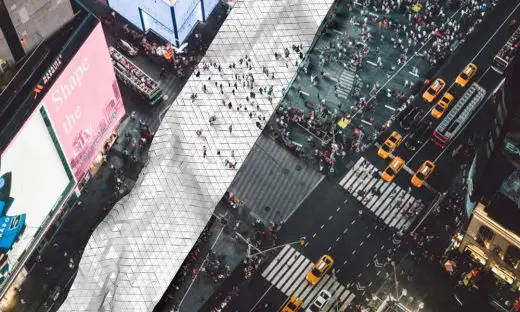
Image: Iulia Radion, Ioana Todiroaie, Liviu Mihalache (Laka Competition 2016)
Images in visualizations: ©J.N. Silva
Laka Competition is an international architectural competition which seeks innovative ideas that go far beyond typical building solutions, are socially engaged, capable of reacting to unpredictable conditions (environmental, natural, social) and provide safety for its inhabitants.
Laka Competition 2017 “Architecture that Reacts”
We invite designers from around the world to submit their ideas of architecture that reacts. That means architecture which is able to respond and adjust dynamically to the current needs and circumstances. These circumstances are often unpredictable, but their consequences can be crucial. The architecture that reacts is the architecture that lives as a living organism, since it responds to the external stimuli and develops because of it.
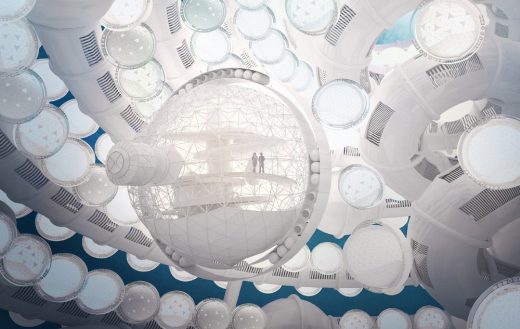
Image: Katarzyna Przyby³a (Laka Competition 2016)
Can architecture react to needs?
The subject of the competition is a conceptual project of architecture that is socially engaged and capable of reacting to unpredictable conditions and environmental, natural and social risks. Architectural study should focus on architecture as a key field heading towards social revitalization and increased safety and freedom of its users. Proposed solutions should involve a thorough analysis of the problem, for example, starting from outlining global factors and indicating key directions for modern architectural solutions. The accuracy of this analysis and the potential of the proposed solutions are going to be the main components of the assessment of the project.
Laka Accelerator is an international program which aims to offer opportunities of investigation, promotion and implementation of the best designs by providing professional consulting, international press coverage and visibility for potential funders. Selected designs will be considered to receive support of Acceleration Partners through a qualification process, which will be separate from the process of awarding the main prizes.
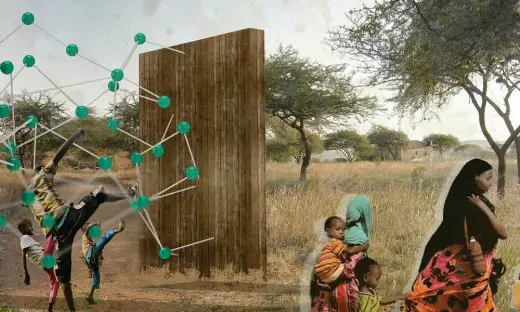
Image: Asmaa Almunayes (Honorable mention, Laka Competition 2016)
2. International Jury
Alexander Rieck
(Architect, Researcher, Co-Founder of LAVA Laboratory For Visionary Architecture)
Senior researcher at the renowned Fraunhofer Institute in Stuttgart. He studied architecture in Stuttgart and Phoenix. He started his research career in the virtual reality environment. Together with Chris Bosse and Tobias Wallisser he founded LAVA in 2007 as an international network using the latest research and technology to build efficient, sustainable and beautiful structures. Having led many “Office 21®” research projects, he is a renowned expert on innovations in the fields of office, hotel, living and future construction, and an author of many publications about working environments and building processes of the future.
http://www.l-a-v-a.net/
Carlo Ratti
(Architect, Engineer, Founding Partner of Carlo Ratti Associati, Director of the Senseable City Lab)
Director of the Senseable City Lab at MIT, founding partner of the international office Carlo Ratti Associati. He graduated from the Politecnico di Torino and the École Nationale des Ponts et Chaussées in Paris, later earning his MPhil and PhD at the University of Cambridge, UK. In the last decade, Carlo has given talks around the world on the theme of Smart Cities. Two of his projects – the Digital Water Pavilion and the Copenhagen Wheel – were hailed by Time Magazine as ‘Best Inventions of the Year’. He has been included in Blueprint Magazine’s ‘25 People who will Change the World of Design’ and in Wired Magazine’s ‘Smart List: 50 people who will change the world’.
Melanie Fessel
(Architect, Urban designer, Director at Terreform ONE, Initiator of ONE Odyssey)
Melanie is a director at Terreform ONE and an initiator of ONE (Open Network Ecology) Odyssey – an interdisciplinary research enterprise based on philanthropic design principles, to integrate ecological issues into the urban environment. Her process focuses on the synergy of design, urban studies, and ecological science. She received her post-professional degree Master of Architecture II from The Cooper Union. Prior to the Cooper Union, Melanie earned her Diploma in Architecture and Engineering from the Berlin University of Technology, Germany after attending the Escuela Superior de Architectura, Universitat Politècnica de Catalunya in Barcelona, Spain.
http://www.terreform.org
http://www.oneodyssey.org
Peter Kuczia
(IARP, BAK Architect, author of CO2 Saver House)
Educator and expert in ecological constructions with more than 20 years of experience. In 2008 he defended his PhD dissertation on solar architecture in Germany. Author of “Educating Buildings – Learning Sustainability through Displayed Design”. He has been awarded international prizes, such as the 1st prize of the Polish Green Building Council for ZERO-ENERGY Research and the Educational Complex Wroclaw University of Technology; a national nomination to the MIES VAN DER ROHE AWARD for European Architecture and many others. His work, which covers a wide range of building types, has been exhibited and published around the world.
http://www.kuczia.com
Thom Faulders
(Architect, Founder of FAULDERS STUDIO, Professor of Architecture at California College of the Arts)
Founder of FAULDERS STUDIO. He works at the intersection of commissioned architecture, speculative design research, permanent public art installations, and international museum and gallery exhibitions. His participation in leading international museum and gallery venues includes the FRAC Centre Orleans in France, Oslo Triennale, SOMarts Cultural Center San Francisco, San Francisco Museum of Modern Art, New York Museum of Modern Art and many others. Thom is licensed to practice architecture in California. He has taught at UC Berkeley and KTH in Stockholm, and is currently Professor of Architecture at CCA.
http://www.cca.edu/academics/faculty/tfaulders
http://www.faulders-studio.com/
Vincent Callebaut
(Archibiotect, Designer, Lecturer, Founder of Vincent Callebaut Architectures)
Vincent is an ecological architect focused on ecodistricts, which take into account a variety of aspects of sustainability, eg. renewable energies, biodiversity, urban agriculture. He is one of the most important leaders in green architecture and low carbon emission living. He graduated from the Institute Victor Horta with his Parisian project of the Metamuseum of Arts and Civilisationsª Quay Branly. A laureate of the Grand Architecture Prize Napoléon Godecharle of the Fine Arts Academy in Brussels awarding the best hope of Belgian architecture. In 2013, Vincent has been featured on the list of the Top 50 Sustainable Architecture Award Members of the Green Planet Architects.
http://vincent.callebaut.org/
3. Judging Criteria
We avoid applying too many design constraints on the participants. The participants are free to decide about the location of the project, its scale, size and program. Listed below are some highlighted issues that the jury will pay attention:
1) a properly indicated architectural, social or environmental issue to solve,
2) an accurate analysis of the selected issue,
3) a properly chosen architectural solution that “reacts” and solves the indicated issue.
Listed below are some issues that explain the concept of “Architecture that Reacts”:
an ability to respond to social, economic, environmental changes | a level of social and environmental engagement of the design | a relation to a specific social, natural and built context | a level of flexibility and adaptability of the design | an innovative use of technology and sustainable systems | a level of self-sufficiency of the design.
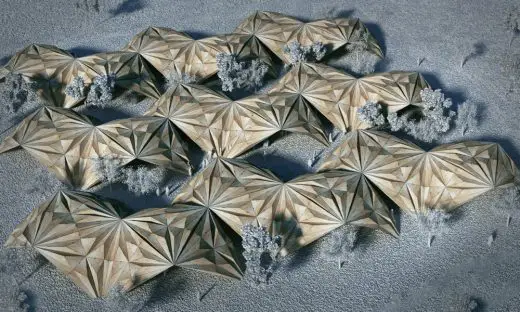
Image: Ayax Abreu Garcia (Laka Competition 2016)
4. Awards
5000 USD* will be distributed among winners:
1st PRIZE: 2500 USD
2nd PRIZE: 1500 USD
3rd PRIZE: 1000 USD
* The Organizer pays 10% tax on financial awards in the country of the Organizer’s business activity.
* The Organizer reserves the right to increase the financial awards value
In addition: 10 honorable mentions will be selected.
The winners and laureates of honorable mentions will be published in several international online magazines, and on the website of the Laka Competition. The best proposals will be selected by the international Panel of Judges.
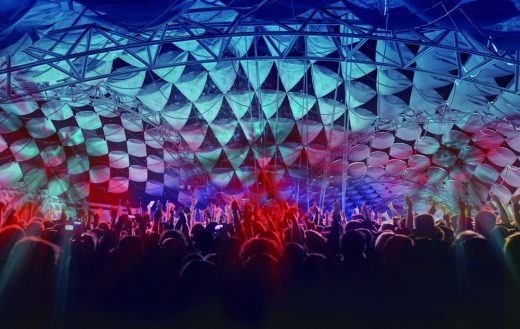
Image: Yuanye Huang, Daniel Parker, Suyi Zha (Laka Competition 2016)
5. Join Competition
We invite architects, students, engineers, biologists, sociologists, designers, thinkers, companies, organizations and everyone interested in the mission of the competition to submit their ideas. No professional qualifications are necessary.
Participants may submit multiple projects, but each entry must be registered separately. There is no limit as to the number of participants per team. Individual entries are allowed. Interdisciplinary teams are also encouraged to join.
Schedule:
Registration opens in April, 2017
Early Registration: 50 USD until June 1, 2017
Regular Registration: 75 USD until October 1, 2017
Late Registration: 100 USD until November 1, 2017
Project submission deadline: November 2, 2017
Jury deliberation: November, 2017
Winners’ announcement: December 1, 2017
UTC time zone for all dates
After your registration has been approved, we will send you a unique number for your team. If you haven’t received a confirmation within 2 business days, please contact us at hello@lakareacts.com or our Facebook profile. The registration number will be necessary to submit your proposal.
The Organizer reserves the right to reduce the registration fee for selected Participants in a difficult financial situation, after a positive evaluation of their individual request.
6. Submission Requirements:
●Participants must submit their proposal not later than November 02, 2017 (23:59 UTC) to competition@lakareacts.com
●This is a digital competition and the boards must be prepared in digital format. Hardcopies will not be accepted.
●The project submission must contain the following files:
1. One board 24”(h) X 48”(w) in horizontal format with 150 dpi, saved as JPG file in RGB mode, file size of the JPG file should be less than 10 mb.
● The board should include all the information that entrants consider necessary to explain their proposal.
● In the upper right corner the registration number must be included. This is an anonymous competition and the registration number must be the only form of identification.
● JPG file must be named according to the registration number (for example: 0227.jpg)
2. A TXT file with the project statement (up to 500 words). The TXT file must be named according to the registration number (for example: 0227- statement.txt).
3. A TXT file with the Participants’ personal information: name, profession, address, email. In the case of a team, a team representative must be indicated. The TXT file must be named according to the registration number (for example: 0227- team.txt).
All three files must be placed in a folder named according to your registration number and archived to a ZIP file (for example: 0227.zip) The ZIP file must not be larger than 10 mb and must be sent to competition@lakareacts.com with “Laka Competition 2017 Entry” in the title, not later than on November 2, 2017 (UTC). We will send you a confirmation of receiving the submission within 48 hours.
7. Rules and Regulations:
Participants can submit their inquiries concerning the regulations of the competition to hello@lakareacts.com
●All projects must be submitted in English
●This is an anonymous competition. The registration number is the only form of identification.
●The registration fee is non-refundable
●Contacting the Jury is prohibited
●Entrants will be disqualified if any of the rules and regulations are not followed
●Laka reserves the right to modify the competition schedule
●All participants must accept the Rules and Regulations: LINK
8. Contact us:
If you have questions about the competition do not hesitate to contact us: hello@lakareacts.com
We always answer inquiries within 2 business days. If you haven’t received our reply, your inquiry may not have reached us for technical reasons, in this case, please contact us again via our social media.
Laka’s website:
http://lakareacts.com/
Follow on social media:
http://facebook.com/Laka.reacts
Tweets by lakareacts
http://www.instagram.com/laka.reacts/
http://linkedin.com/company/laka-architektura
Website of the competition: http://lakareacts.com/competition-2017/
Partners of the competition: http://lakareacts.com/partners/
Laka Competition 2017: Architecture that Reacts images / information from Laka
Location: Korea
Architectural Design
HOLLYWOOD – arch out loud competition
Comments / photos for the Laka Competition 2018: Architecture that Reacts page welcome

